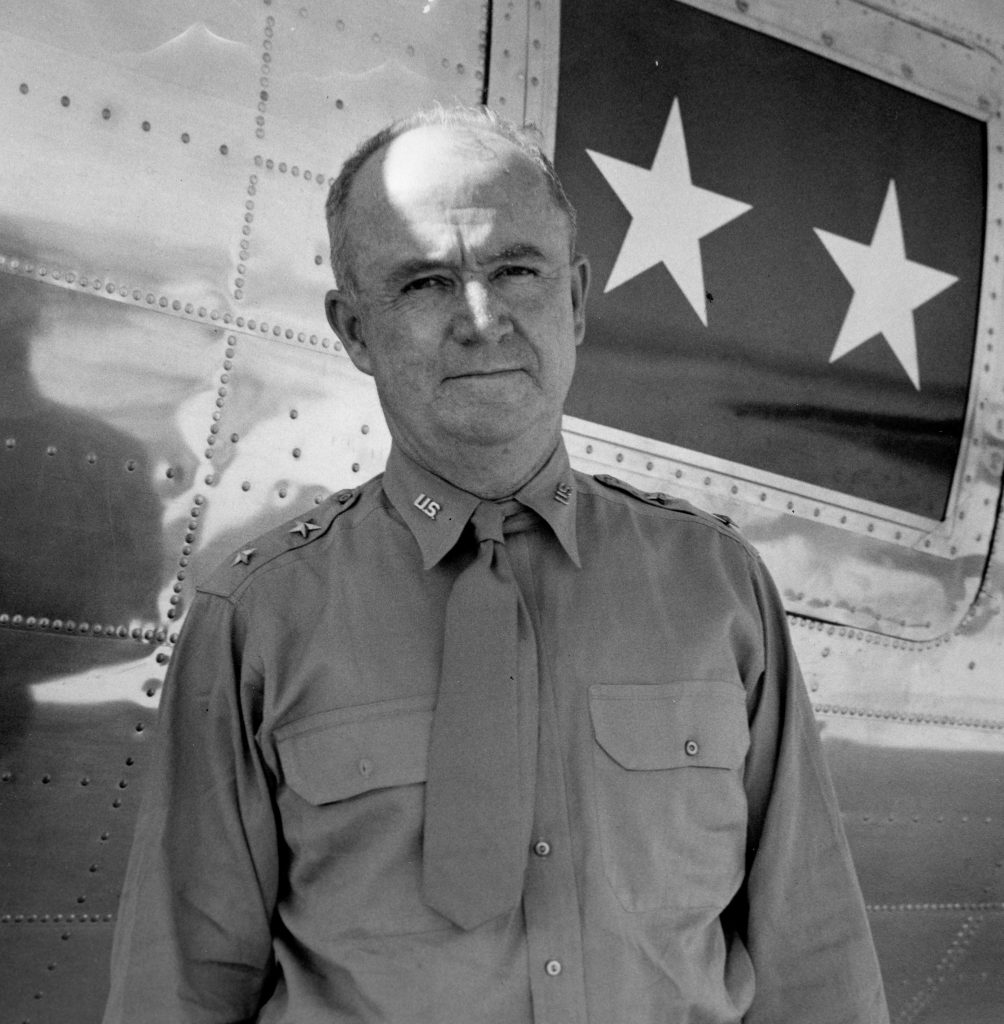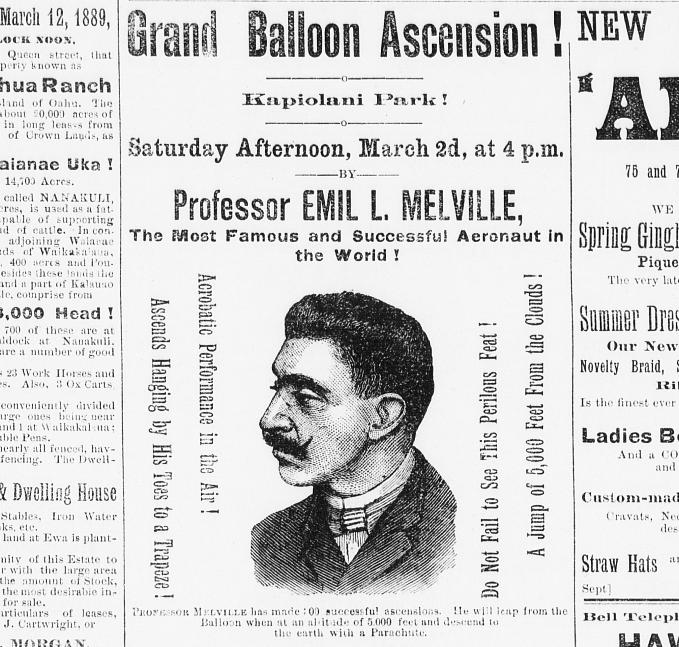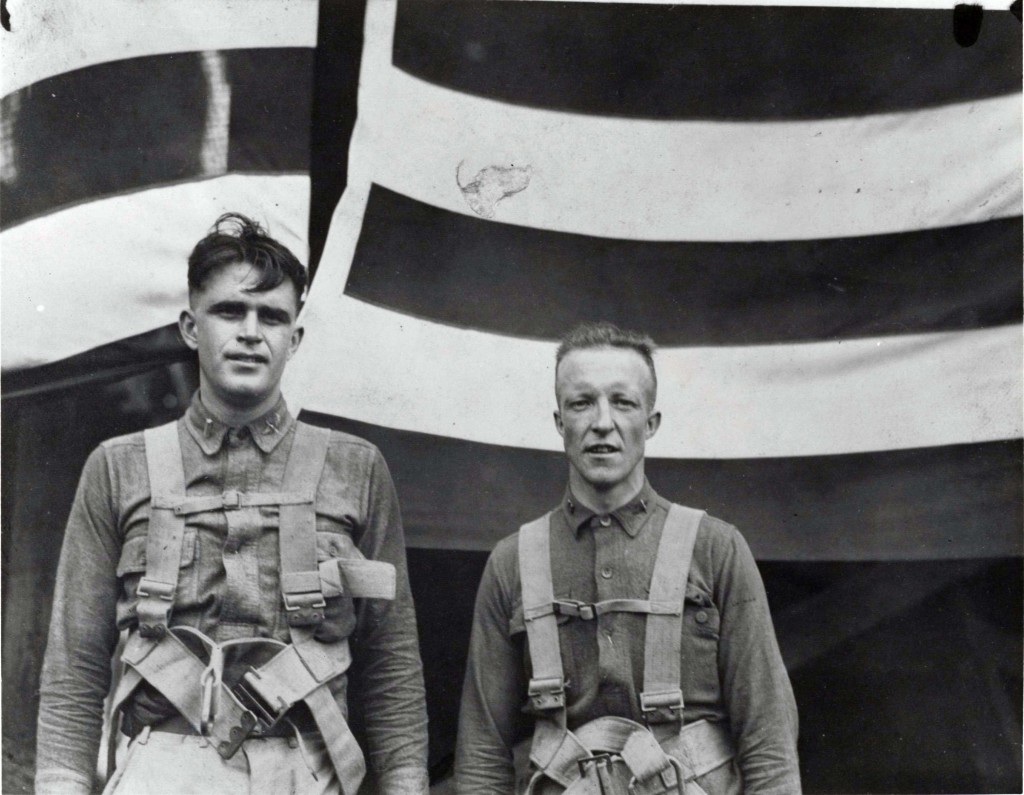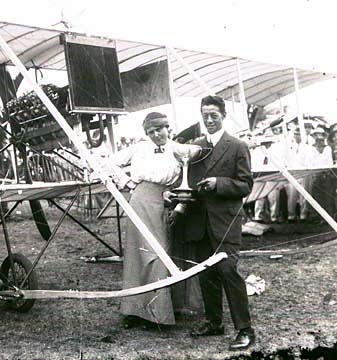Aviation Pioneers
Amelia Earhart

Four ocean liners arrived in Honolulu Harbor on December 27, 1934, bringing 400 passengers to the Islands. One was the Lurline carrying 246 people aboard, including another famous flyer who would create one more aviation mark for the world though the use of Hawaii. Now married, famed aviatrix Amelia Earhart Putnam came with her New York publisher husband, George Palmer Putnam. With them were friends Albert Paul Mantz, another well-known pilot, and his wife (also a qualified pilot)…
Charles Fern

Fern started barnstorming from Kapiolani Park in Honolulu on December 30, 1919, nine years after Mars’ first flight, carrying the first paying passenger in Hawaii since Tom Gunn. The cost was $10 a hop with $25 for stunt flying.” His Jenny had an OX5 engine which developed 90 horsepower and carried enough fuel for 2 ½ hours cruising or about 150 miles…
Charles Stoffer
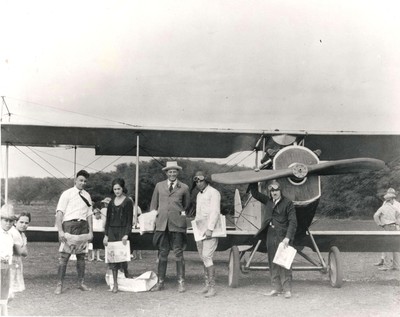
Charles Stoffer came to Hawaii at the invitation of Ben Stoddard who wrote to his ex-flying instructor in Woodland, California, informing Stoffer that Charles Fern left their flight business to take up another position in Kauai. He asked Stoffer to bring his seaplane to the islands to fly for the company…
Clarence H. Walker
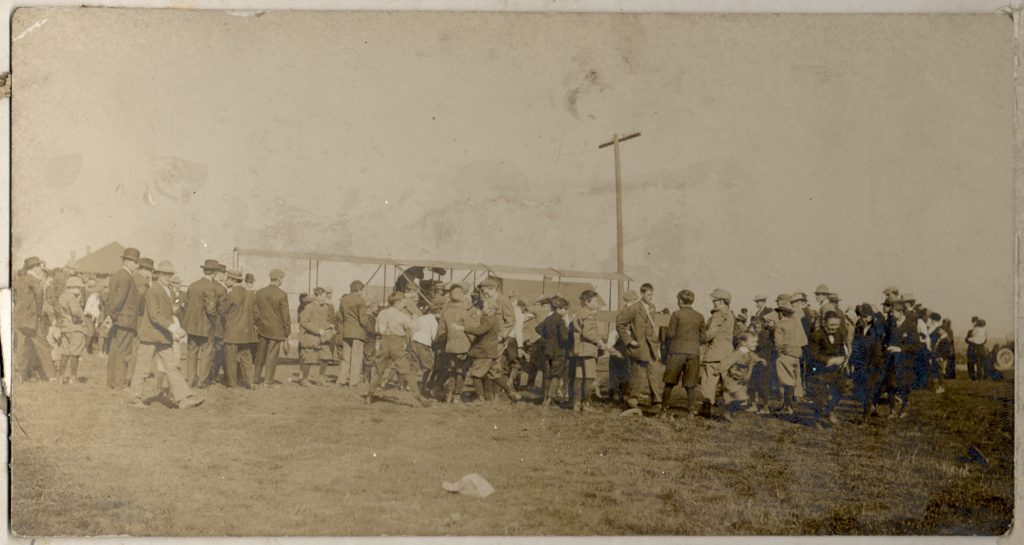
Walker found it profitable to go into the flying business. He teamed up with Dorgan and French aviator Masson then proceeded to Hawaii, first stop of a tour to include several cities in Australia. Hilo’s Hawaii Herald of June 8, 1911, reported: “First recognition came through his winning prize for amateurs at the big meeting given at the Tanforan race track, San Francisco, in January. After that he made flights throughout California and on May Day in Watsonville he covered 20 miles without a mishap of any kind.”…
Dick Grace

One of the first fliers to make the attempt to fly to Hawaii was a famous movie stunt pilot, Dick Grace. Grace had performed incredible tricks with his airplane for films, was well regarded and respected. For years he had the desire to make a crossing form Honolulu to the mainland. No attempts were made, however, because the aircraft up to that time were incapable. Now, planes were more efficient, had better speed and could handle a greater fuel load…
Didier Mason
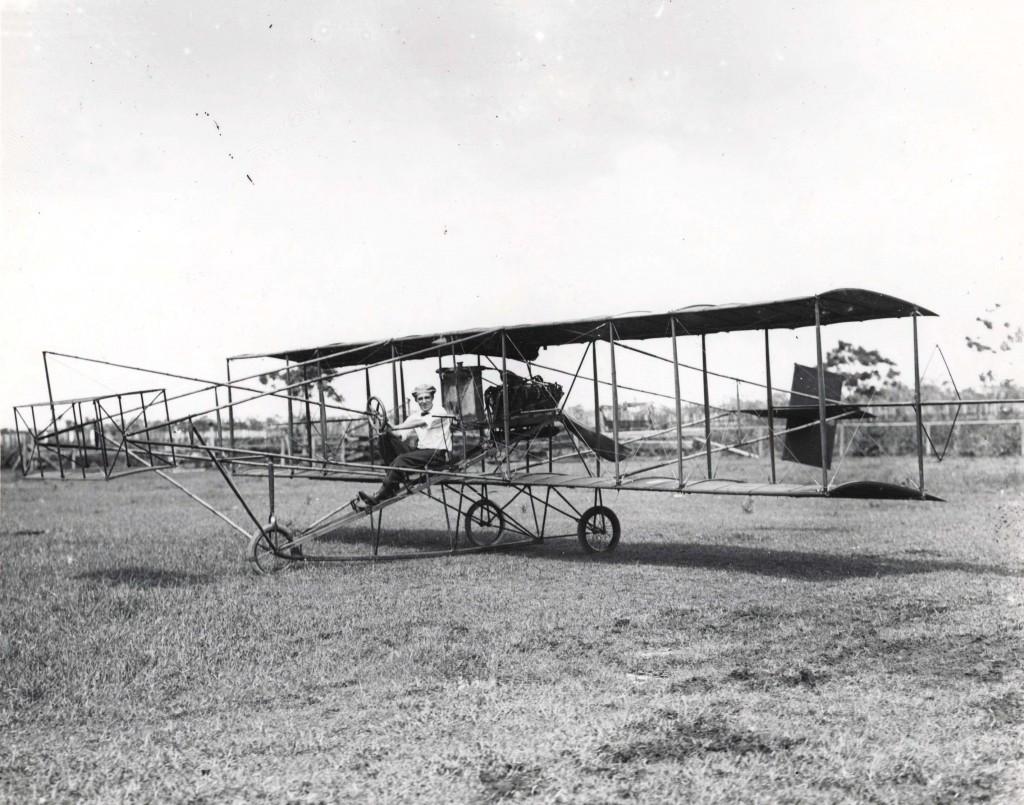
Masson was an experienced pilot with a reputation for daring. Most noteworthy of his recent aerial feats was participation in the United States’ first aero meet, in Los Angeles, the previous year. He had amazed onlookers there by climbing to a height of 6,000 feet and carrying 500 newspapers over a “sensational 79-mile route,” then delivering the papers upon flight completion…
Elbert and Malcolm Tuttle
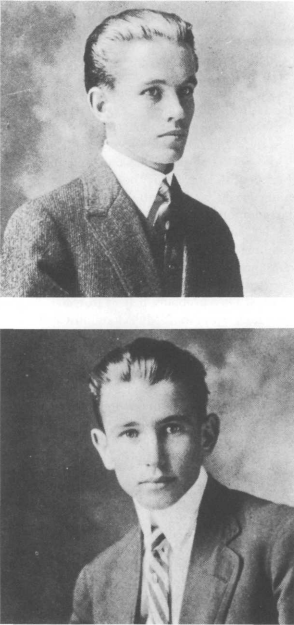
Malcolm and Elbert Tuttle (fig. 2) had arrived in Honolulu on the S.S. Sierra, on September 23, 1907. They came with their father and mother, Guy and Margaret Tuttle. Before the boys were born, Guy Tuttle had worked in Washington, D.C. as a clerk in the War Department. When an opportunity came for him to be transferred to California, to the Los Angeles area, he took it, and he worked there for the U.S. Immigration Service. The Tuttles lived in Pasadena where Malcolm was born on March 20, 1896 and Elbert on July 17, 1897…
Emory Bronte
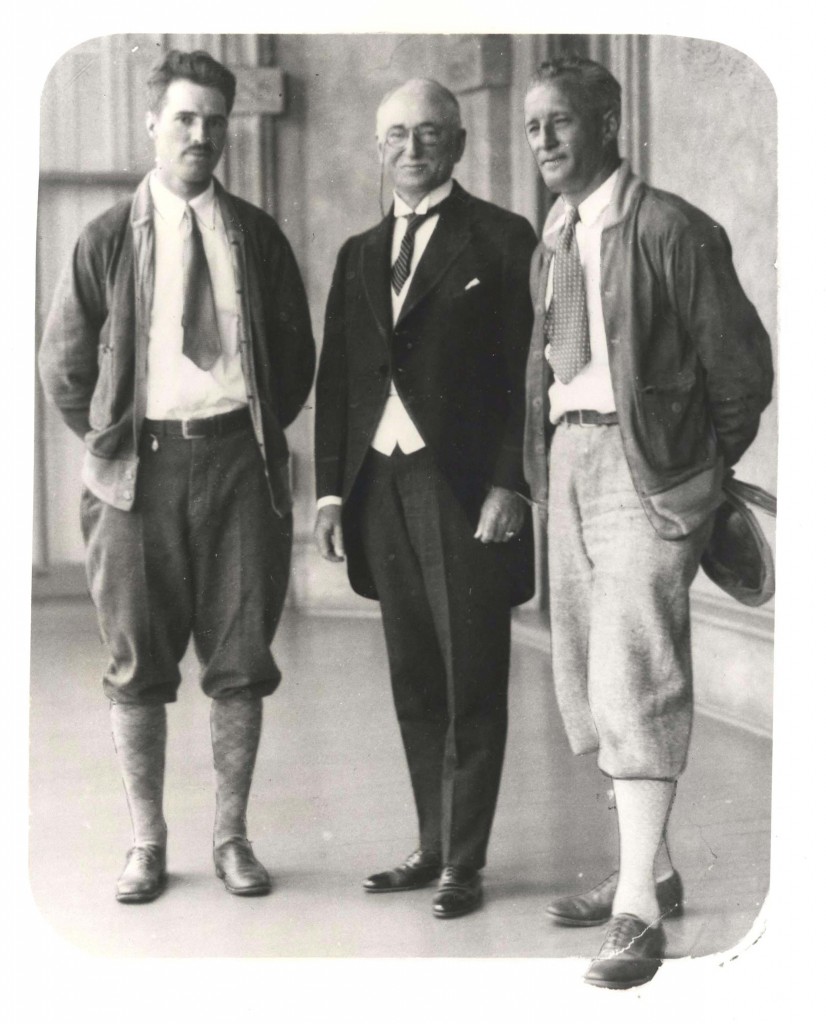
A young man telephoned Bill Royal (managing Smith’s affairs) asking for the job. An appointment was arranged for the next day at the airport, for interview by Smith. His name was Emory B. Bronte. The eager applicant had taken pilot training in 1923, and was also rated a master mariner. Intrigued with the idea of flying across the ocean after Lindbergh’s conquest of the Atlantic, he had watched from a rooftop as Maitland and Hegenberger flew out the Golden Gate. “I had read about Carter bowing out of the picture,” Bronte said, “and decided to apply for the job. I wanted to make such a flight, and this was my chance.”…
Ernest Smith
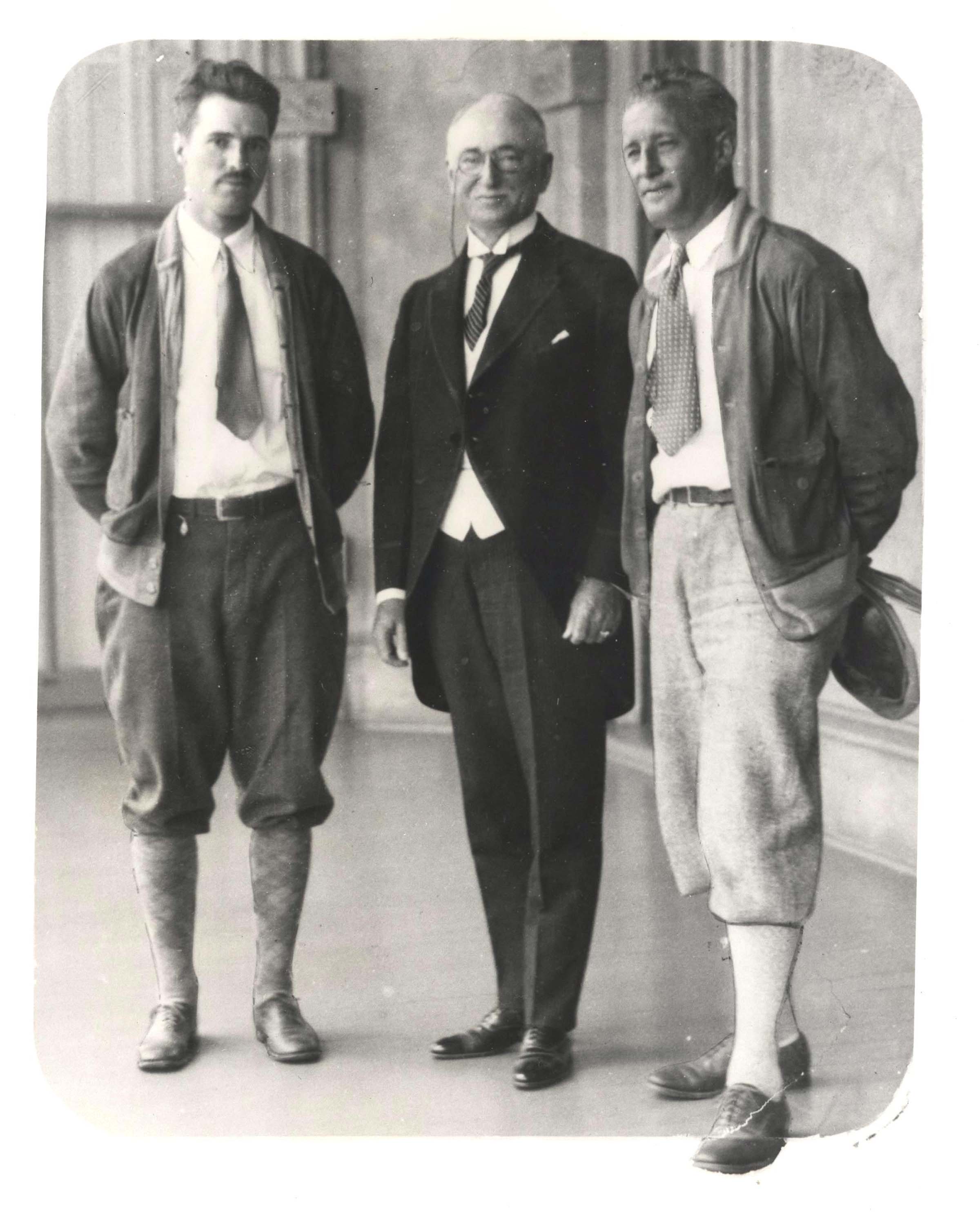
At Oakland the Army group met an exuberant ex-military pilot named Ernest Smith in 1927. An airmail flyer of late, Smith wanted the distinction of being the first to fly to Hawaii and made no attempt to dispel that impression. His drive was strong and incessant. With his navigator Captain C. H. Carter, Smith expected to go airborne momentarily and head for Hawaii in his single engine Travelair monoplane. The watching public—and Smith—began talking about a race, one between the Army and the civilians…
Gus Schaefer & Burton Dryer

Gus Schaefer’s plane came into the news again on January 1, 1912. Burton H. Dryer, chief machinist’s mate on the USS West Virginia, explained his flying background to Schaefer and talked the builder into letting him fly the plane on a test run at Leilehua. Schaefer accepted the offer but warned the alleged pilot to follow Glenn Curtiss’ advice for single-plane and unproved airplanes: initially, fly just above the grass tops…
J. C. “Bud” Mars

On December 27, 1910, J. C. “Bud” Mars, pilot for the demonstrations, arrived on the Wilhelmina. Also, aboard the same ship were Captain Thomas Scott Baldwin, the veteran flyer, Tod Shriver, the plane’s designer and also an aviator and two kite-like airplanes. Their strange looking metal birds were taken to Samuel Damon’s Moanalua polo field for assemblage. Each was a pusher craft with propeller and engine behind the pilot; there was no cabin or compartment for the man. One was put in flying order. It was a cumbersome-looking contraption. Where the retinue went, particularly Mars, crowds of awe-stricken and curious people followed…
John Rodgers
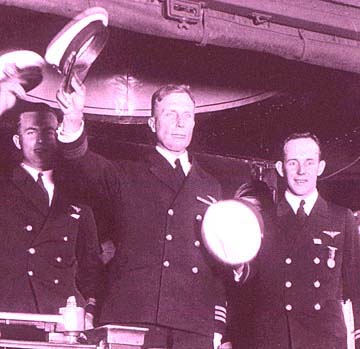
(Commander John Rodgers, USN, on August 31 in the PN-9 Seaplane (2 Packard 500 hp engines) flew 1,992 statute miles from San Pablo, California to a point near Honolulu, although he failed to reach his objective, in Honolulu. This “failure” constituted a new world record for a non-stop flight by seaplane. Following are excerpts from Commander Rodgers’ own story as told to the National Aeronautic Association, October 9, 1925 in New York City.)…
Joseph Lawrence Van Tassell
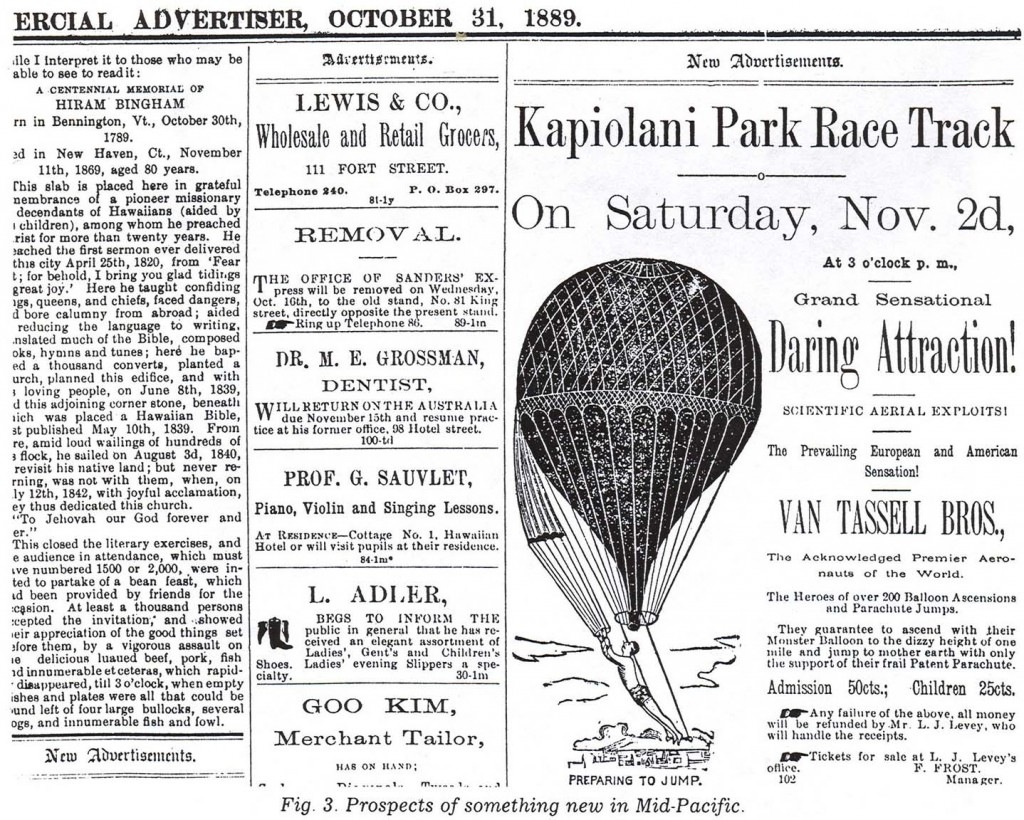
The first successful aeronautical incident in Hawaii took place eight months after Emil Melville’s failure. Professor Joseph Lawrence Van Tassell came to Honolulu from Fresno, California, where on October 3, 1889, he made an impressive balloon ascension. Hawaiians were pleased at the prospects of witnessing either the first successful conquest of the air in Hawaii, or another sideshow as Melville’s display turned out to be…
Lt. Albert F. Hegenberger
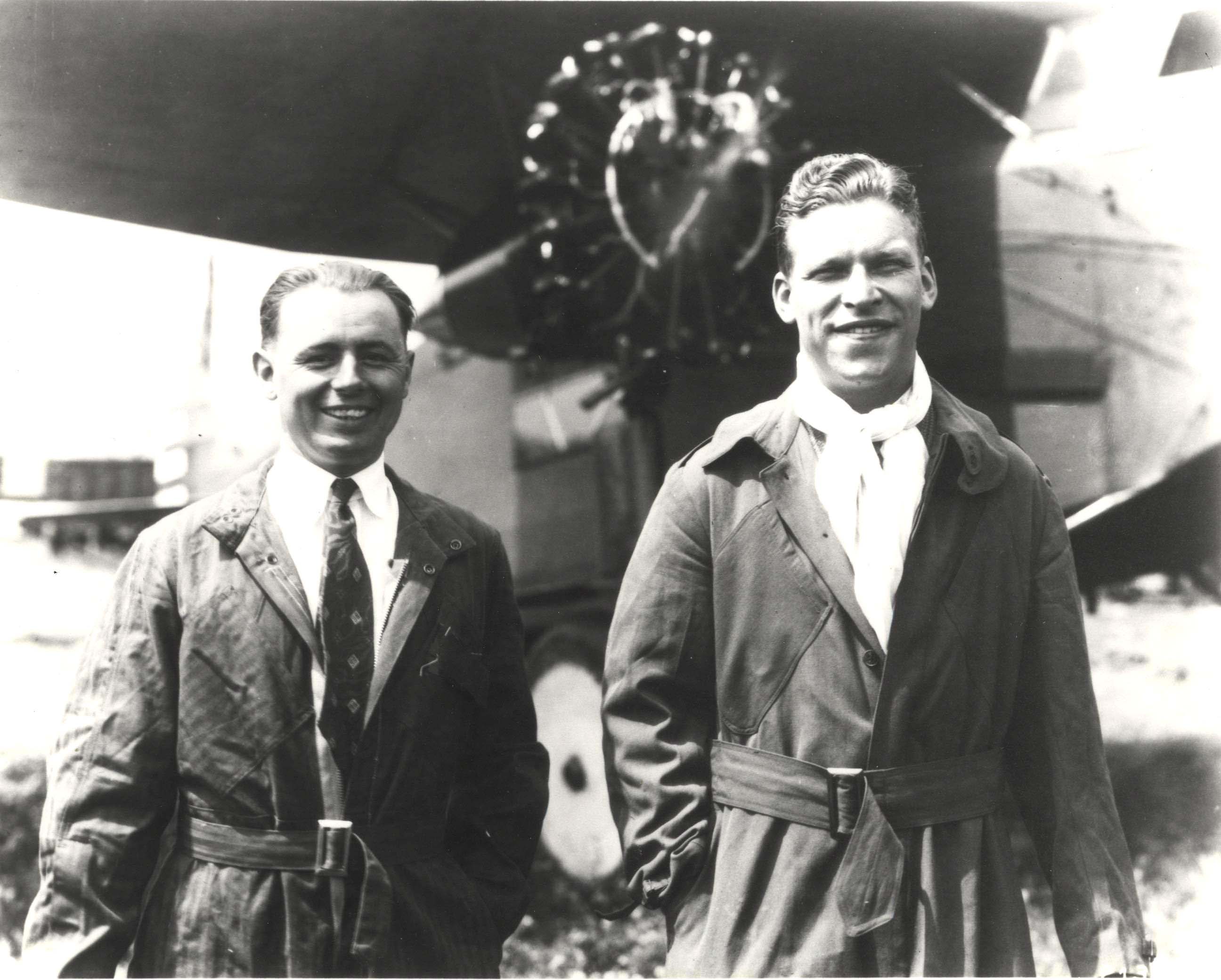
Hegenberger was Chief of the Instrument & Navigation Unit, Materiel Division, Wright Field which, for the most part under his leadership, had been studying problems of such a flight—and of trans-oceanic flying in general—since the summer of 1919. A program for such a flight had been laid out in this unit in February, 1920. Since 1919, Hegenberger tested every known navigation instrument and method, including regular “blind” flying tests and engineering of the equipment’s development…
Lt. Harold Geiger
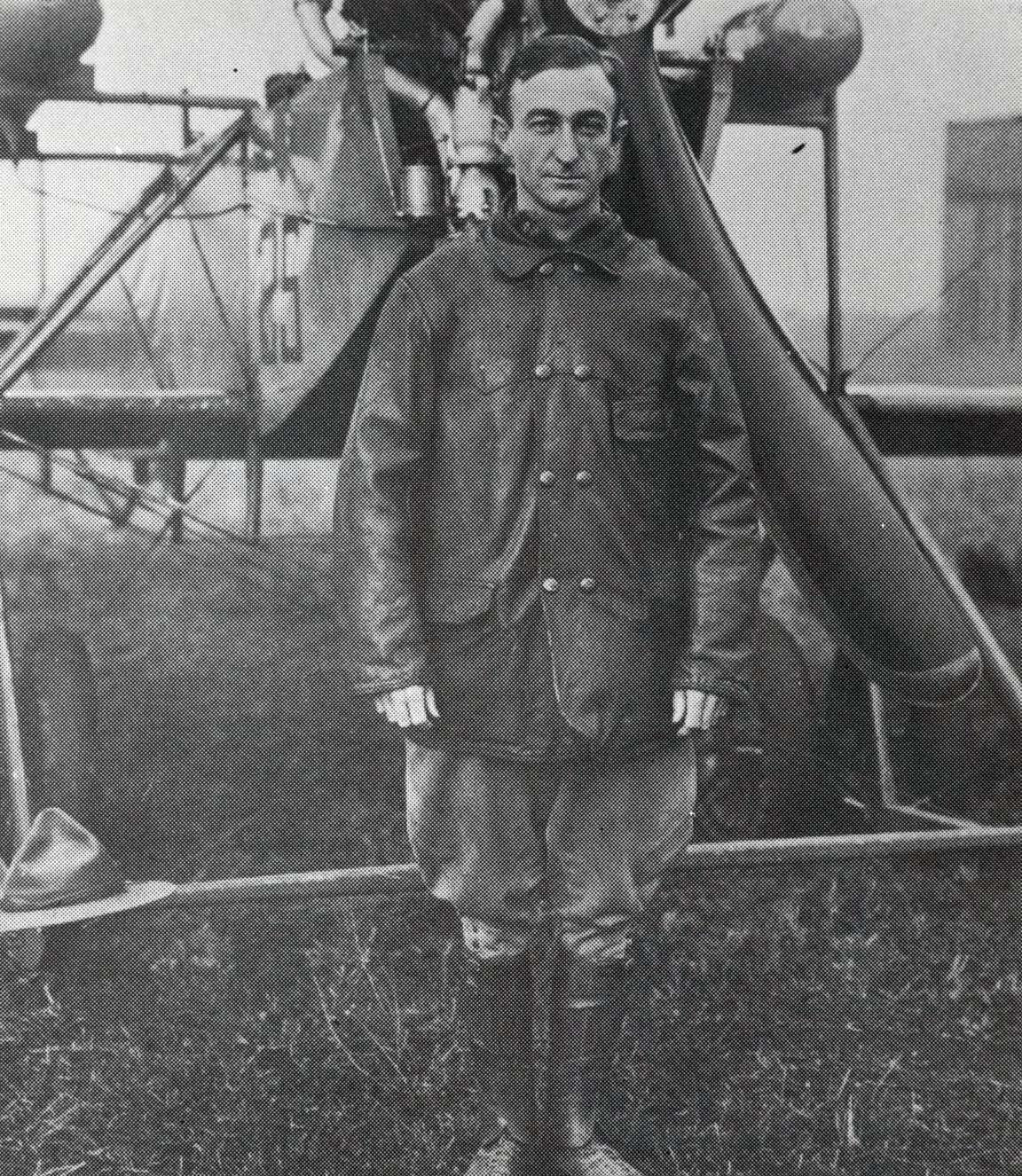
The first military airplanes and aviation personnel arrived in Honolulu on July 13, 1913. First Lieutenant Harold E. Geiger, U.S. Army, brought with him 12 enlisted men and a civilian engine technician named George Purington. They had been transferred from the Army’s first permanent flying training center, Glenn Curtiss’ San Diego flying school. The group was under orders to set up a flying school in Hawaii; another was set up in the Philippines…
Lt. Lester Maitland
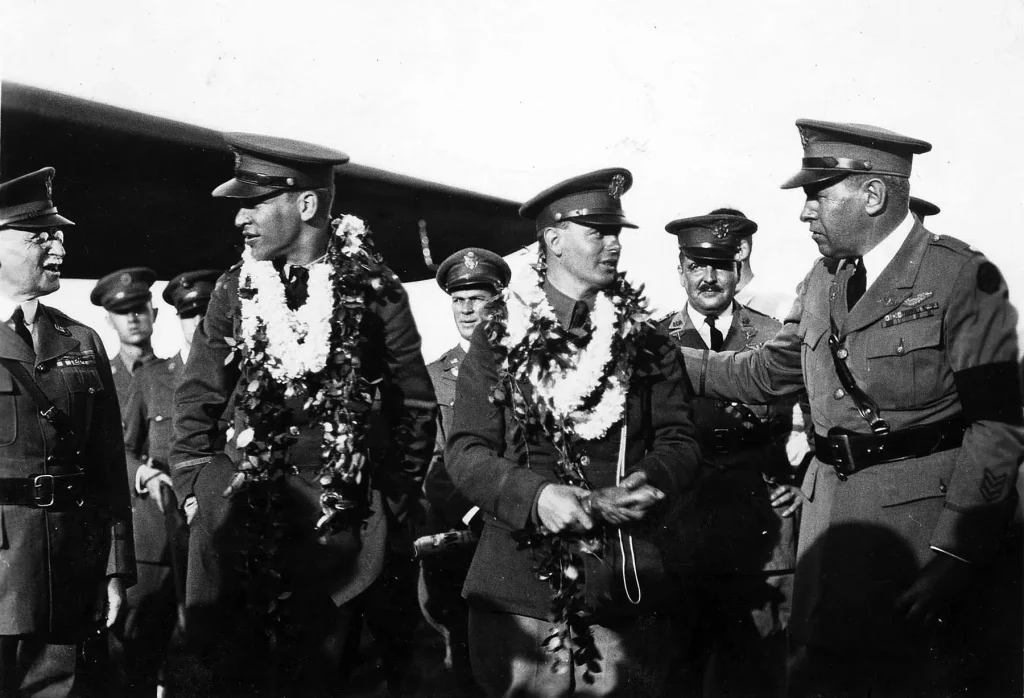
On the morning of June 28, 1927, at precisely 7:09 a.m. Pacific Daylight Time, First Lieutenants Lester J. Maitland and Albert F. Hegenberger of the United States Army Air Service embarked on a daring journey across the Pacific. Taking off from Oakland Municipal Airport, California, they piloted the Atlantic-Fokker C-2 aircraft, identified by serial number A.S. 26-202 and christened Bird of Paradise…
Major Harold Clark

Major Harold M. Clark Jr. became Army Department Aviation Officer in November, 1917. A Herculean construction effort was initiated at the new Army air base. Before long, Ford Island had two double seaplane hangars with concrete ramps, two wooden land plane hangars, one small motor repair and machine shop, and a supply warehouse. In the center to the south end a narrow strip of land was cleared for land plane operation. By this time, the 6th’s strength increased to 10 officers…
Martin Jensen

News accounts of preparations and stories on contestants continued daily in Hawaii, until the race was completed and for days afterwards. Honolulu was afire with interest. Contestants included two from Hawaii, popular Martin Jensen and Harvey Lemeke (who bowed out later). With his wife’s active campaigning, the ALOHA came under Jensen’s control. A Breese monoplane, it was christened with a bottle of Waikiki water in a splendidly Hawaiian manner, complete with Hawaiian singers and hula dancers. Miss Ruby Smith, an Oakland beauty queen, broke the bottle amidst Hawaiian strains and dances. Jensen was particularly proud of the painted Hawaiian flower lei which draped comfortably around the plane’s nose…
Marguerite Gambo Woods
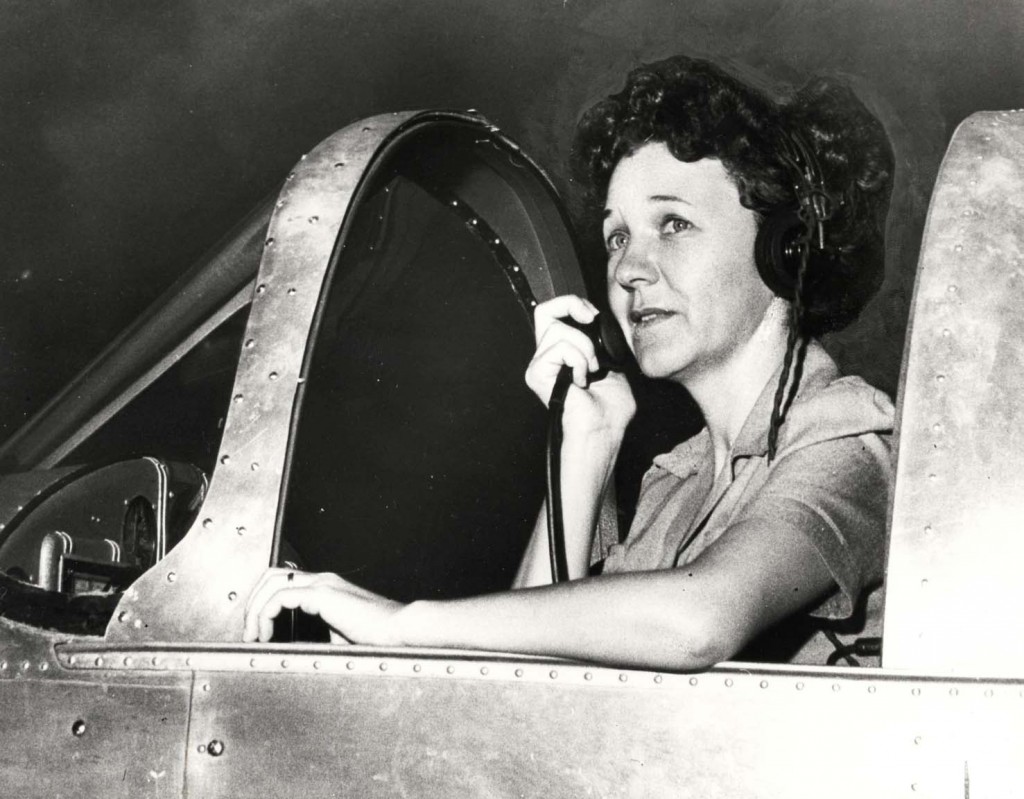
Hawaii produced numerous aviatrixes in the 1930s, under instruction of Olen Andrew, Paul I. Gunn, Robert L. Tyce, Charles B. Knox, and Edward L. Peacock, in particular. The most notable was Marguerite Gambo (later Wood), who began to fly occasionally in 1932 with Peacock, and in 1937 was sent by Tyce on her first solo in a Kinner Fleet. Gunn provided the lady flyer with advanced training and soon she was rated a commercial pilot. In 1938 she participated in flying events, giving stunting exhibitions…
Sen Yet Young
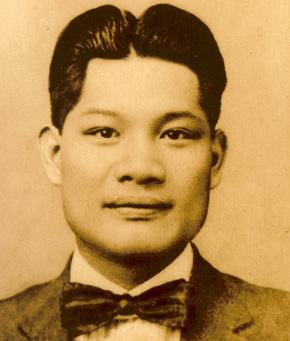
The first Hawaiian resident to graduate from a flying school, and first to hold sea and land plane ratings, was Sen Yet Young, Honolulu-born son of a wealthy Chinese. Young soloed at the Curtiss flying school in Buffalo, New York on October 2, 1916. His instructor was Phil Rader who claimed to have been in the first known aerial combat (in Mexico, late in 1913). Later, he remained to study airplane mechanics as well. Subsequently, a Buffalo newspaper reported the Hawaiian’s intention to purchase a Curtiss plane “and take it to the land of the hula-hula.”…
Sir Charles Kingsford-Smith

Australian Squadron leader Charles Kingsford Smith climbed aboard his second-hand airplane (built of two Fokkers and previously flown on an arctic exploration). Also entering the plane were Charles P. T. Olm, co-pilot and another Australian; Harry W. Lyons, navigator from Honolulu; and James W. Warner, radio operator from the United States…
W. Benn Stoddard

Stoddard, in July of 1919, took a few flying lessons from Stoffer in Woodland, California, but didn’t finish the course. When his interest in flying cropped up again, Stoddard purchased a JN4D and asked Fern for flying lessons. After talking it over, the two elected to go barnstorming in California’s northern communities. But everywhere they went in the San Francisco Bay area, some flyer was already in place…

